African Slaves on Long Island, New York
In 1626, a ship carrying 11 male slaves sailed into the harbor at New Amsterdam. They were immediately put to work by the Dutch West India Company building roads, cutting timber, clearing land and helping construct a major fort at the southern tip of Manhattan. For the next 38 years – until the British took over New Netherlands and renamed it New York – the Dutch slowly increased the numbers of slaves in the colony, including the settlements on western Long Island.
Some slaves were imported directly from Africa, but the Dutch officials preferred to buy slaves who had been “seasoned” by a few years of living in the West Indies. By then they had gotten used to working as slaves, had picked up some of the new language, and in many cases had contracted and survived a bout with the killer disease smallpox, thus becoming immunized.
By the middle of the seventeenth century, the colonists of Long Island found that there were not enough people in the colony to fill their needs for house servants and farm laborers. The Dutch West India Company suggested slaves from Africa, and the first slaves direct from Africa arrived on August 6, 1655, and in 1660, more were sent from Cenaco on the African coast.
Long Island had the largest slave population of any rural or urban area in the north for most of the colonial era. Beginning with the original 11 black slaves in 1626, the number of slaves in New York grew to almost 20,000 on the eve of the Revolutionary War a century and a half later.
By 1698, there were 2,130 blacks in New York; almost half of them were on Long Island. There were 199 blacks out of a total Queens population of 3,565. The Hempstead census of 1722 shows that for 937 white men and women there were 192 slaves, for 954 white children there were 127 young slaves. Queens County had the largest slave population – 1,064 slaves out of a population of 7,995.
On Long Island, slaves were widely scattered about the thinly populated countryside, and although a wealthy 18th Century landowner like William Floyd in Mastic might have a dozen or so slaves, one or two was more common. The daily family life of a Long Island slave was markedly different from his or her counterpart in the South, where large groups of blacks in separate slave quarters could at least share their religion, culture and social life, often with their own family members.
Slavery spread throughout the Island among all types of people. Even ministers and Quakers held them as personal servants or as laborers on their farms. The number of slaves a man owned was indicative of his wealth. The poorer families held one or two, and the more prosperous as many as eight.
The rare Long Island farmer with a dozen or so slaves probably housed them in slave cabins separate from the main house. But slave owners with only one or two slaves might have them living in an attic, a cellar, or some other section of their own homes. The farmer might have employed indentured workers as well as casual labor, and when it came time to work the crops, all of them might be found in the fields, working side by side.
The public slave market at the foot of Wall Street slip in New Amsterdam, later New York City, was a busy place. Auctioneers shouted prices, urging higher bids in persuasive tones. Buyers-farmers from Long Island or, perhaps, the foremen of well-to-do plantations wandered through the crowds looking over the coal black newcomers from Africa, who were standing bewildered and dejected on the auction blocks.
Slaves who were not fresh from Africa were seldom auctioned off at the market but instead their masters advertised for buyers in the journals. Or, it was a custom, especially among the Dutch, for the owner to permit slaves who were offered for sale to select their new masters themselves. The owner would give the slave a slip of paper on which his age and price were written, and if he could find someone willing to buy him, he was sold.
In the city, where the slaves were mostly household servants or manual laborers of one sort or another; but on the farms on Long Island anyone who could do a good day’s work was appreciated, and the family usually worked in field and kitchen along with the slave help. The farm hand might do such things, besides laboring in the fields, as caring for the horses and cows, working the dairy and mill of his owner. The women slaves were nurses, cooks, and, kitchen help. Farm workers who showed intelligence might rise to managing the plantation.
Enslaved peoples on Long Island worked in a variety of situations. On farms, they raised sheep and other animals, grew crops, and tended to other farming chores. Others worked in their owners’ houses as domestic servants, taking care of the cooking, cleaning, and child rearing. Men also worked as blacksmiths, masons, tailors, bakers, ship carpenters, tanners, weavers, sail makers, masons or in saw and grist mills. Most slaves on Long Island worked independently and in small numbers.
As a general rule, the early slaves on Long Island must have led quite happy lives. Many of the masters were kind and considerate of their slaves’ welfare. A custom among the Dutch led to a strong attachment between the domestic and his owner. When a black woman’s child reached the age of three it was solemnly presented to a son, daughter, or other young relative of the master’s family. The slave child was given a piece of money and a pair of shoes to make him aware of his new position. The slave boy and his young master (or girl and her mistress) grew up together and became close friends. So the slaves were often willing to remain in the family from generation to generation.
If a household broke up with the death of the head of the family the slaves were often permitted to take any other member as master. The will would state that the slaves might live with any of the children they pleased. If the slaves had to be sold, they usually looked for a suitable buyer by themselves.
The slaves usually slept in the attics on the smaller farms. A more pretentious household might have had quarters for the slaves among its outbuildings. The clothing of the blacks seemed to have been quite haphazard, usually with some gay color brightening the costume.
There were some attempts to educate the slaves. During the colonial period when the slaves were coming in straight from Africa, the masters and mistresses had to instruct their slaves in their various jobs, and had to teach them to speak intelligibly. Later, a bright slave boy might be sent to the village school. A prominent citizen of Hempstead, Gerhardus Clowes, tried to instruct the slaves of the neighborhood during the winter. On February 22, 1814, a school was opened on Liberty Street by the Flushing Female Association. Both white and colored pupils were admitted free unless the parents were willing and able to pay.
While the Dutch took an almost casual approach to the treatment and control of the slaves that were imported into the colony after 1626, everything changed after the British took over the colony in 1664. The British not only stepped up the importation of slaves into America, they passed a series of slave codes regulating slavery that made it harsh, repressive, and brutal.
Slave Laws
The first major slave law came in 1702, titled An Act for Regulating Slaves. No person could trade with a slave without permission of the slave’s master or mistress. Owners could punish their slaves at their own discretion, though they were not allowed to take a slave’s life or sever a body part. Slaves could not carry guns. Except when working for their owners, slaves could not congregate in groups larger than three, with a whipping the penalty of up to 40 lashes. Towns could appoint a public whipper, who would be paid up to three shillings for each slave whipped.
As early as 1706, an act was passed by the legislature of the colony “to encourage the baptizing of Negro, Indian or Mulatto Slaves.” The slave holders wanted their slaves baptized but for some reason were afraid that it would free them. The Act reads, “Baptizing of any Negro, Indian or Mulatto Slaves, shall not be any Cause or Reason for setting them at liberty.” The law also stated that any child born of a slave woman would carry the slave status of the mother, apparently a reference to a child whose father was either a free black or a white slave owner.
The brutal murder of an entire family in Newtown (now Elmhurst) in January, 1708, led to a capital punishment statute against slaves later that year. A farmer named William Hallett, his pregnant wife and their five children were ax-murdered in their sleep by their two slaves, an Indian man named Sam and an unidentified black woman, apparently in the belief that they would fall heir to the property. They were arrested and found guilty at trial. They were executed in front of a large public gathering nine days after the murder, the woman burned at the stake, the man hanged. Two other black men were hanged as accessories.
As the years went by and the numbers of slaves increased, new laws were passed, piling on more restrictions. Import duties were placed on all slaves brought into the colony. The selling of oysters in New York by slaves was banned. The selling of rum and other strong liquors to slaves was prohibited. A 1712 law said that even freed slaves could not own property, reversing the Dutch law.
The most comprehensive act regulating the slaves was passed in 1730 and started out “whereas many Mischiefs have been occasioned by the too great Liberty allowed to Negro and other Slaves.” This attitude was probably stimulated by an attempted slave insurrection in New York City in 1712. The tension between the two races had been steadily growing and the whites were greatly alarmed by the rumor of an intended slave insurrection. During a riot, a house was burned and several white men were killed. The affair was quickly suppressed with the prompt execution of twenty-one blacks. Six others killed themselves.
The whites may have imagined most of the evidence of a premeditated plot, but in any event such an affair made the frightened slave owners ask for protection from their slaves. Since the number of slaves was increasing and they might congregate to make plans for running away, it was unlawful for more than three slaves to meet together at any time. The penalty was being whipped “upon the naked back” not more than forty times.
Slave Insurrection of 1741
The insurrection in 1712 was nothing compared to the upheaval of 1741. Some goods and silver were stolen from a New York merchant, and an indentured servant girl, Mary Burton, told where they were hidden. She was arrested and promised her freedom if she would tell all she knew. Several blacks were arrested.
A few weeks later the governor’s house was burned to the ground, and dozens of other fires followed. The people of New York were ready to believe the rumor that the blacks had plotted to burn the city, and blacks were seized indiscriminately and thrown into prison. In all, from May 11th to August 29th, 154 were put in prison, fourteen burned at the stake, eighteen hanged, and seventy-one transported. The terror of the New Yorkers over the affair spread to Long Island, because it was believed that the Island blacks joined in the plot.
After committing a misdemeanor, slaves were given an immediate trial, as the law demanded. It could hardly have been very fair for the slaves seldom had counsel, and the Justices of the Peace were not apt to be sympathetic. The worst treatment the blacks could be given was torture, while they were being executed. The purpose was to terrorize the other slaves into good behavior.
By the middle of the 18th Century, Long Island was no longer a rural backwater. It had progressed well beyond the early colonial subsistence level, where individual farmers lived in isolation and produced only what they themselves used.
As the colonial period came to an end, on the eve of the Revolutionary War, slavery remained a potent force on Long Island. In the 1771 census, Kings County had 3,623 people, and almost one-third of them were black, most of them slaves. Queens, which included present-day Nassau County, had 10,980 residents, one-fifth of whom were black. Suffolk County by then had the largest population on Long Island, 13,128, and 11 percent were black.
At that time there were only faint stirrings of distaste for the slavery system on Long Island. It would take a revolution, the formation of a new state government and the rising of abolitionist sentiment before New York State, the largest slave state in the North, would give up its peculiar institution.
Emancipation
Throughout Long Island’s history local citizens opposed slavery. However it was not until the late-1700s, after the Revolution, that an organized movement began to emancipate all slaves. The movement was led in large part by the Quakers, including Elias Hicks, who were adamant abolitionists. The Quakers founded the Society for Effecting the Abolition of the Slave Trade as part of a national movement. On Long Island the Hicks Family of Jericho and other Quaker families housed runaway slaves en route to New England and Canada.
Among the farmers who first set their slaves free were the Gardiners of Gardiner’s Island. These slaves settled near East Hampton in a village they called Freetown. They sometimes went back to work as laborers on the Island, and were often paid with clothing made of the homespun for which the island was famous.
The slaves had no surnames until they were freed, at which time they usually took the master’s name. A slave could not be freed unless the master entered into bond for two hundred pounds, so that the slave wouldn’t be a burden on the town.
A State law of March 29, 1799, provided for the gradual abolition of slavery. To prevent freed slaves from becoming charges on the town, an investigation was required before the Overseers of the Poor would grant the slave’s freedom. If the slave was under fifty and capable of supporting himself, he could be freed. If he became a beggar, his last owner was fined ten pounds sterling.
In March, 1817, an act was passed freeing all slaves who had been born after July fourth, 1797, the males at twenty-eight years old, the females at twenty-five. Every child born in slavery after the passage of the bill was to be free at twenty-one. The last step was taken in ridding the state of slavery in 1827, when the state legislature passed a law prohibiting the holding of slaves in New York State. Slavery disappeared from Long Island, leaving traces only in the documents and newspapers on the island.
SOURCES
Slavery on Long Island
Long Island Slavery – PDF FILE
Long Island Traditions – PDF FILE
White New Yorkers in Slave Times – PDF FILE
Disposition of Slaves on the East End of Long Island from 1680 to 1796

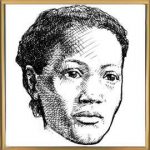
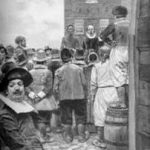
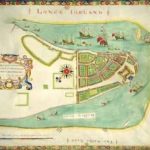
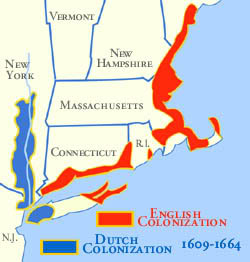

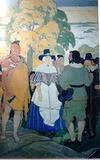
This is a horrific article, for several reasons, but mostly due to this line: “As a general rule, the early slaves on Long Island must have led quite happy lives. Many of the masters were kind and considerate of their slaves’ welfare.”
Slaves were, by definition, property; they were not seen as fully human. No matter how “well” they were treated, or how much better they may have fared compared to their Southern counterparts, humans ripped from their ancestral lands to become the property of others, with zero rights, and no say over their own futures, did NOT lead happy lives (even if they found brief moments of happiness during their ENSLAVEMENT). There is no amount of goodwill a master could’ve provided to make up for that. Attempts to water down our history and the atrocities of slavery are detrimental to everyone, particularly African-Americans.
I completely agree. This article definitely sugar coats slavery.
you are not a understanding
life was very hard to survive during those years
to be included even as a slave to a family
meant the slave could work for food clothing and shelter
the slaves often sold their services as labor to survive.
If slaves led a generally happy life by rule then why were there ever revolts? Besides failing in logic, the article recasts the myth of happy slaves yet again and with zero evidence. More accurate scholarship has uncovered the use of whipping posts, shackles, and manacles as common practice in Long Island and elsewhere in New York. For the sake of history revise! And be accurate!